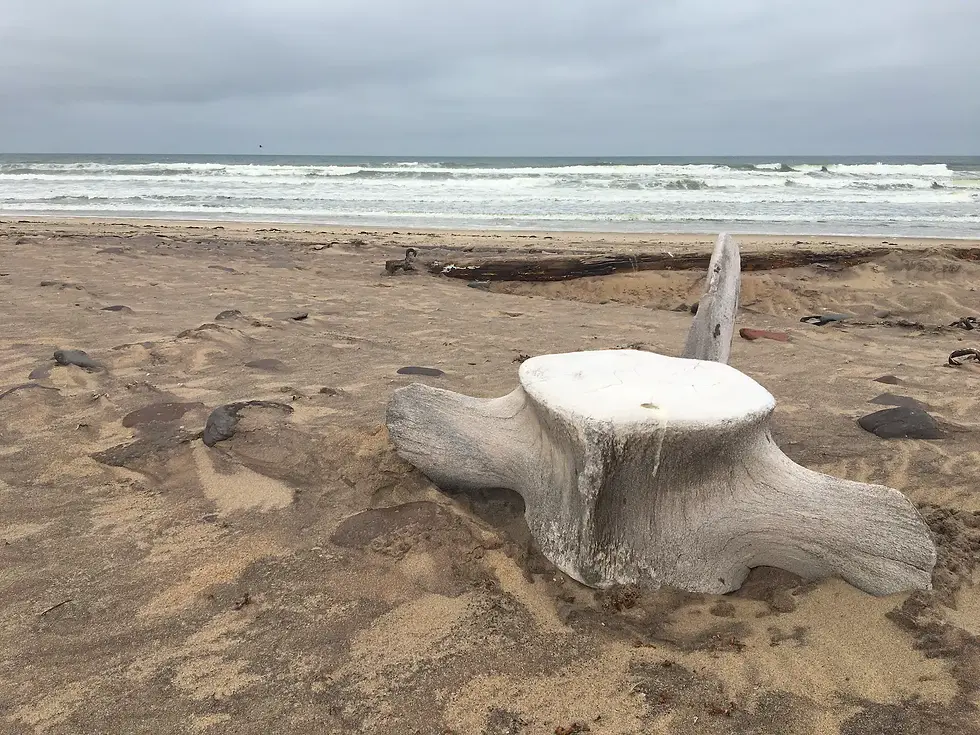🐚 Coastal Curiosities: Why Are There Whale Bones in the Desert?
- Hellen M.
- May 25
- 2 min read

It's one of the strangest things about the Skeleton Coast: you can hike through scorched dunes and suddenly find a whale rib taller than you are, half-buried in the sand like a forgotten artifact. But how did a sea creature’s remains end up so far inland—sometimes kilometers from the ocean?
The answer is:
Part #1: Ancient Shorelines

Geologists believe the Namib Desert has been around for over 55 million years. During that time, the coastline has shifted dramatically. What is desert now may once have been sea.
Some whale bones found inland are thousands of years old, deposited when the shoreline stretched farther into the present-day dunes. As the land rose and waters receded, these skeletal remains were left high and dry.
Part #2: Ocean Currents and Death Traps

The Benguela Current, one of the world’s coldest and strongest upwelling systems, brings rich nutrients—but also dooms whales that get disoriented or stranded near the coast. The Skeleton Coast is notoriously shallow, with violent surf and no safe harbors.
When whales beach, scavengers do the cleanup. Sun, sand, and time do the rest.
Sometimes, their bones are dragged inland by scavengers like hyenas—or even blown in by relentless winds after years of bleaching and breaking.
Part #3: People of the Bones

The indigenous San people and Himba people have long used whale bones in their structures, rituals, and tools. Some “desert whale bones” were actually transported inland centuries ago and used as:
Rafters or fences
Markers for burial or spiritual sites
Sacred objects, especially jawbones and vertebrae
So, some of these relics aren’t accidental—they were placed in the sands by human hands.
Bone vs. Stone: What's the Difference?

A common mistake among first-time visitors: mistaking giant whale bones for petrified wood or rock formations. Whale vertebrae can fossilize under the right conditions, blending in with the mineral tones of the desert.
Pro tip: Look for sponge-like textures and curved, concentric ridges—that’s bone.
The Skeleton Coast is often called "The Land God Made in Anger," but it's also a natural museum, where the land preserves its dead with a strange reverence.
Whale bones aren’t just remains. They're echoes of a coastline that has been drowning and drying for millennia.
Curiosity Sparked?
Reach out to us and let us know.




Comments